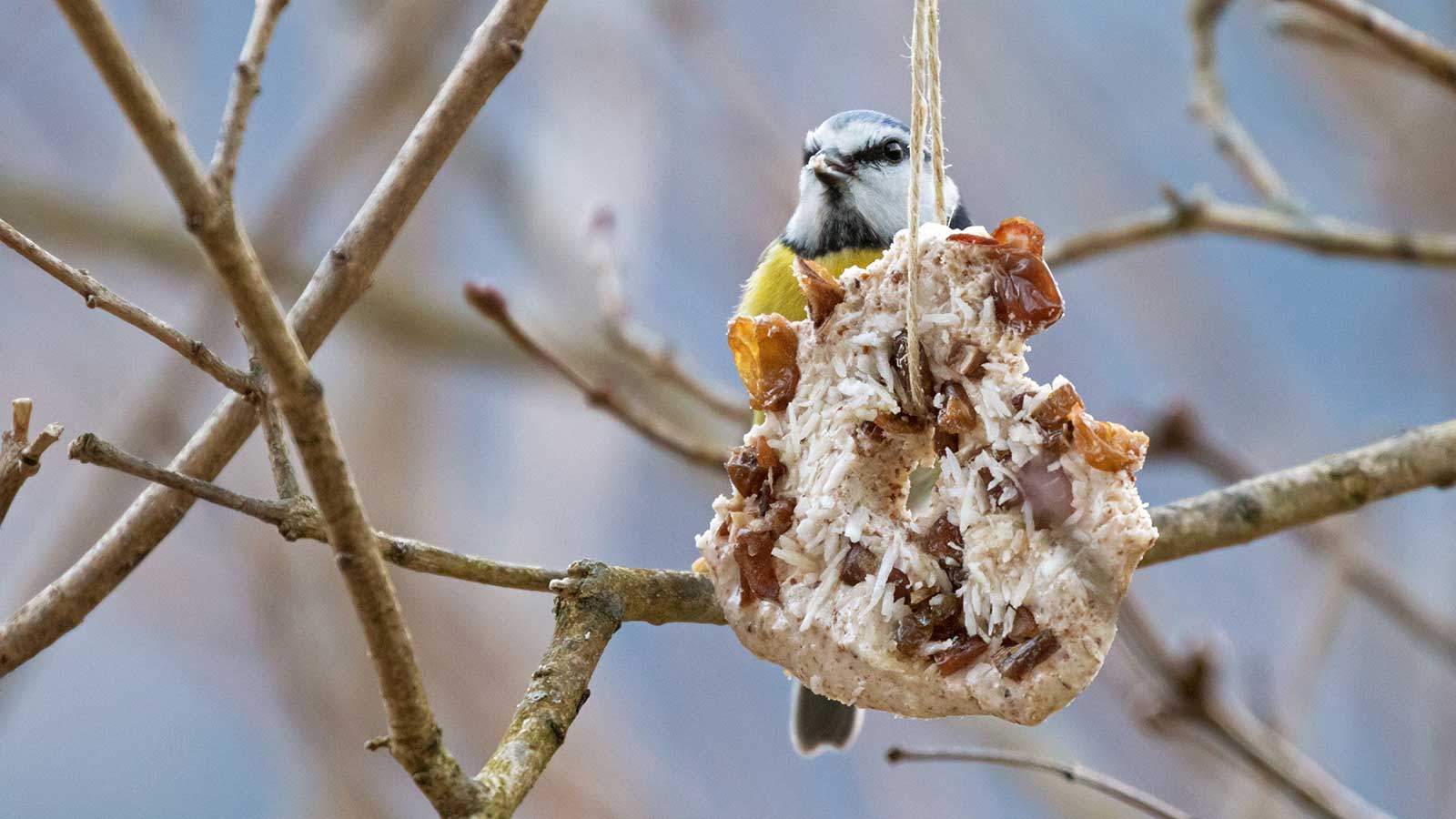
Providing bird food in our backyards is a wonderful way to support the local wildlife. Plus, it puts us more in touch with the natural world.
You can put bird food out all year round to encourage more feathered friends to your plot. But feeding birds in winter, when natural resources are harder to find and the weather is more challenging, is particularly helpful.
During these months, birds will appreciate food that is high in fats and energy, so suet-based treats are ideal. And they're easy to make at home, with the following methods.
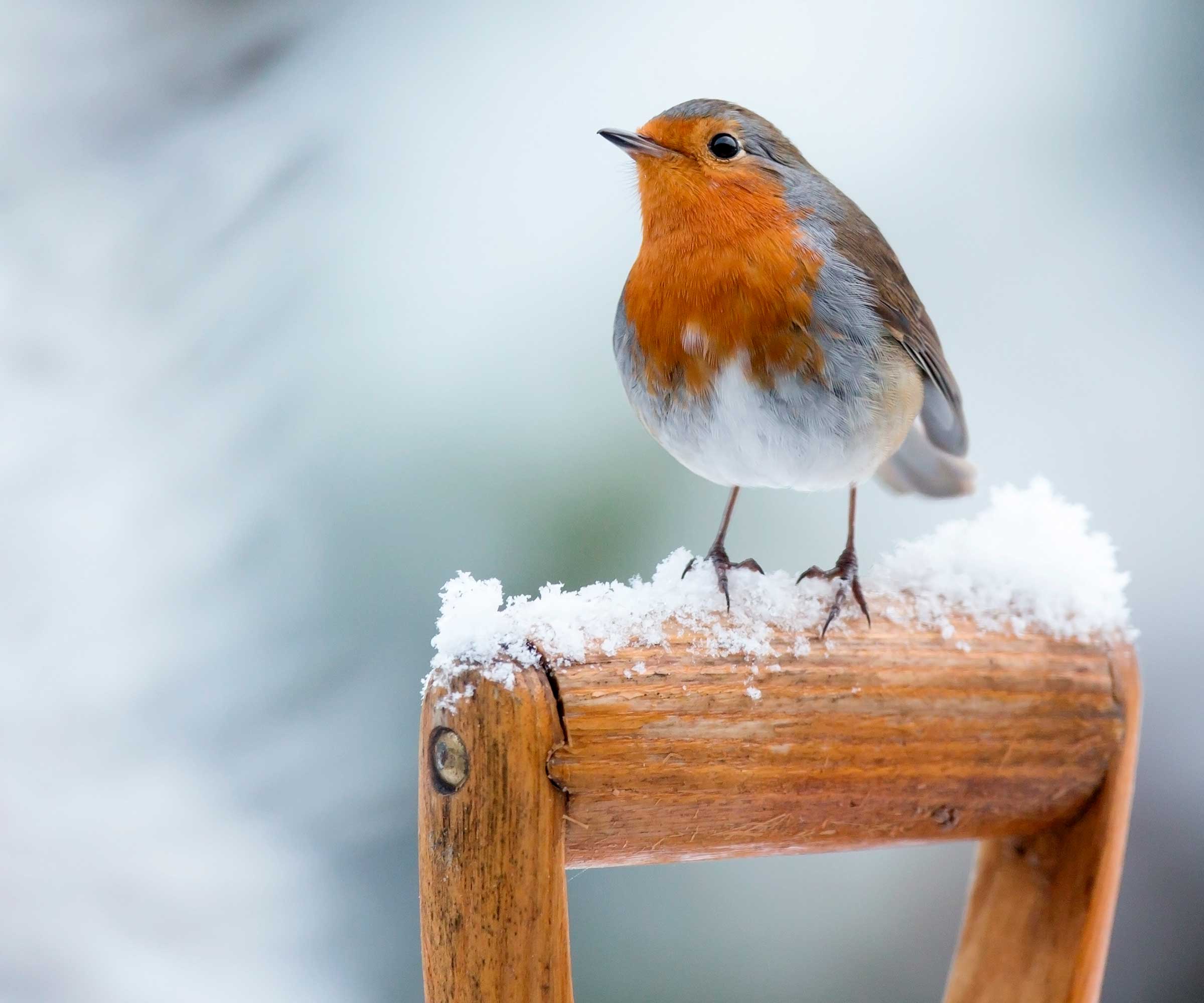
3 natural bird feeders to make at home
These easy DIY feeders are perfect for helping birds through the fall and winter months and making your yard more wildlife-friendly.
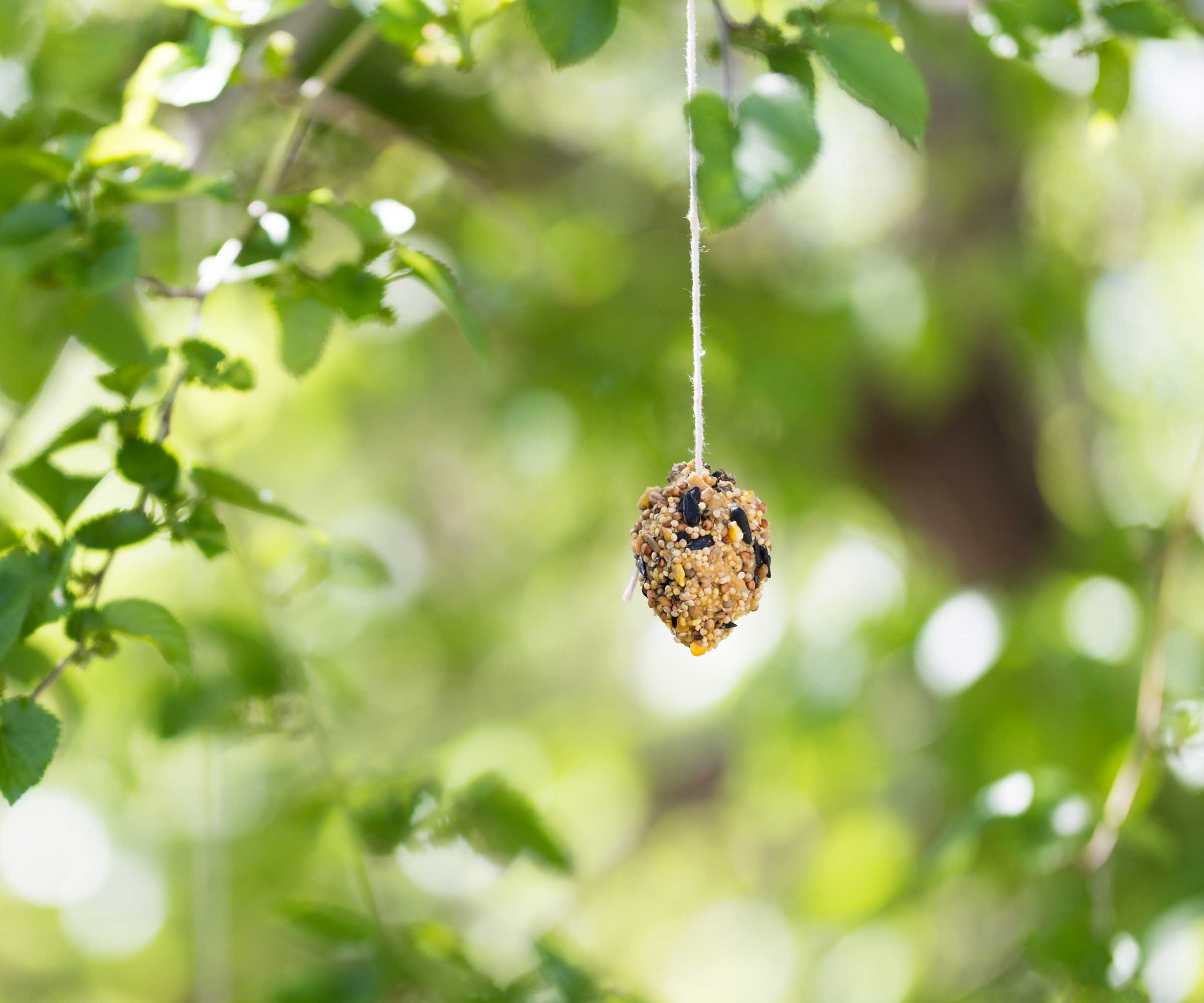
1. Homemade suet feeders

Allison Vallin Kostovick, the creator of Finch + Folly and the author of The Garden Maker’s Book of Wonder (available from Amazon), shares her recipe for making your own suet treats for birds*.
- Mix 3 ½ cups sunflower seeds or wild bird seed mix, 1 cup quick oats, and ½ cup cornmeal in a large bowl.
- Melt 1 ½ cups coconut oil and ¾ cup crunchy peanut butter in a microwavable bowl. Stir well, then pour the peanut butter mixture into the seed mixture.
- Scoop the suet into ice cube trays or molds of your choice and freeze until solid.
Top tip: Add a loop of string before freezing to hang up your suet feeders from tree branches.
2. Pine cone feeders
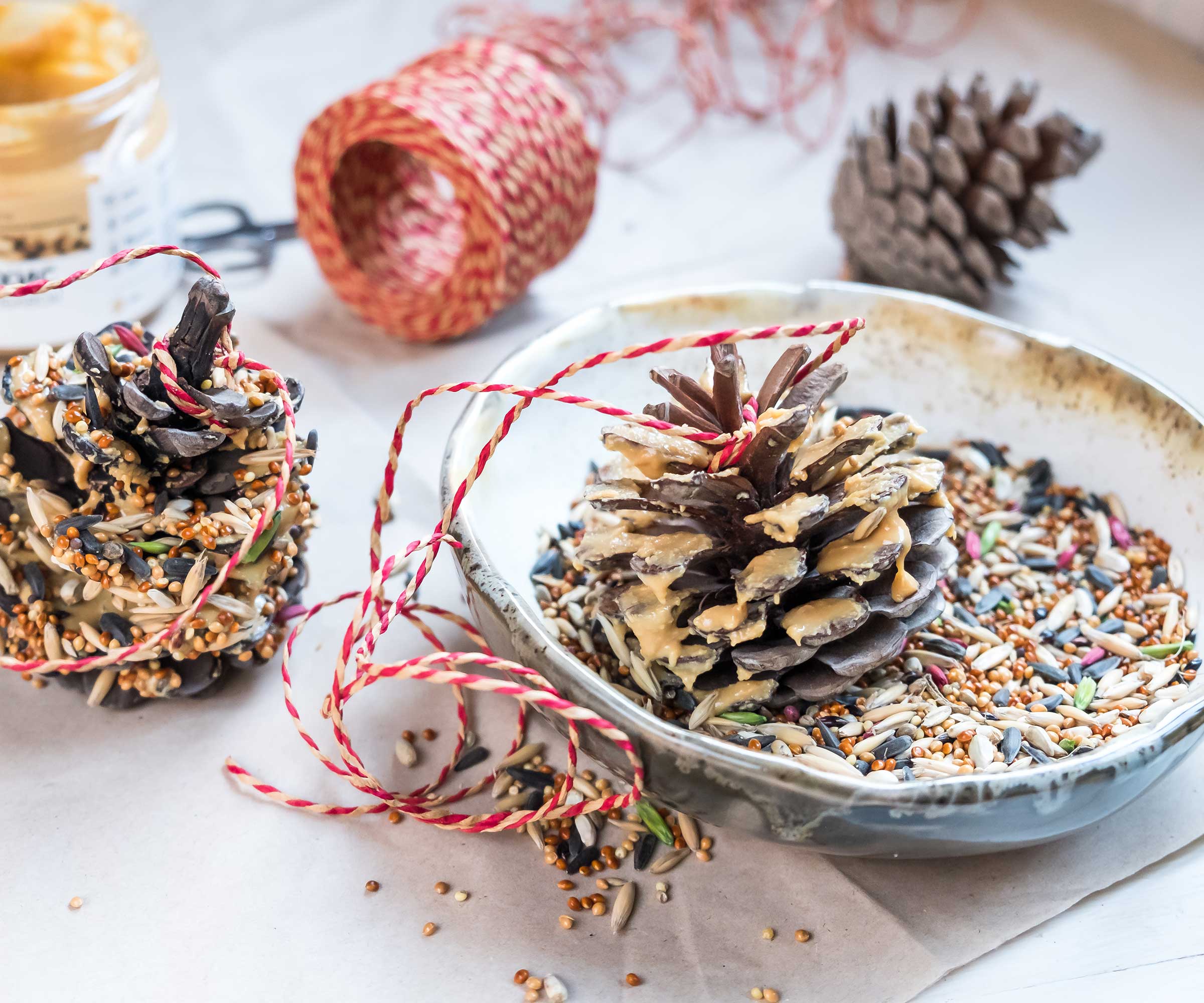
You can create all kinds of festive decor with pine cones. But, they also provide a great base for natural bird feeders.
Making these fun treats is an activity that kids will love to get involved with. Allison's step-by-step recipe* is below:
- The first step is to preserve the pine cones (this also allows you to save them for other crafts). Preheat the oven to 200°F/95°C and line a baking sheet with aluminum foil. Place the pine cones on the sheet and bake for 30 minutes, or until the resin becomes clear. Note: Pine cones can be flammable, so don’t leave the oven unattended.
- Once baked and cooled, tie a string to the top of a pine cone for hanging.
- Using a spatula, coat the cone in peanut butter or suet.
- Place birdseed in a mixing bowl and roll the coated pine cone in the seed, mashing the seed gently into the pine cone’s crevices.
- Hang outside in a spot where you’ll be able to gaze at it.
3. Orange feeders
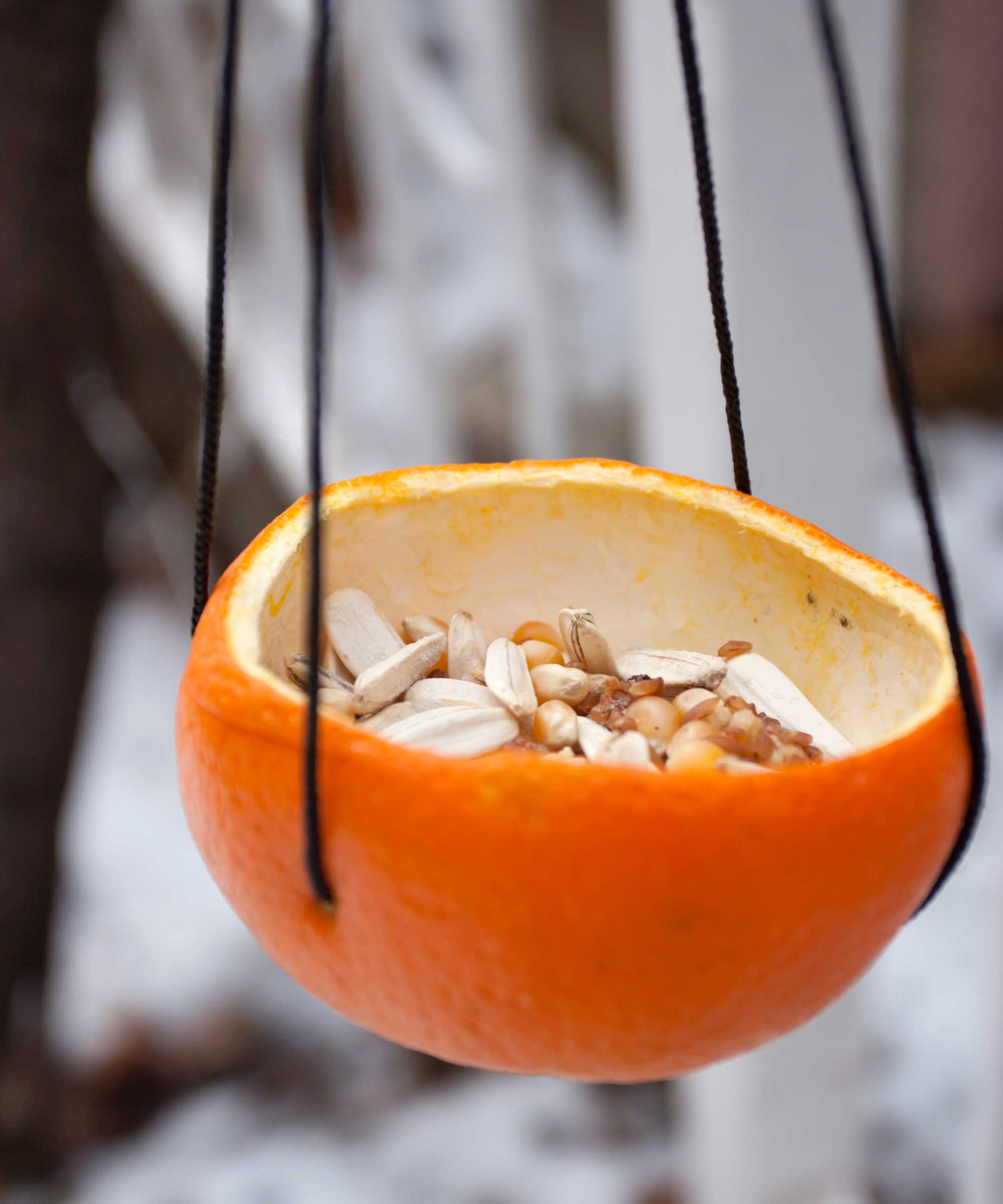
This DIY method is a great way to put orange peels to good use. Or, for something a little more long-lasting, you could try coconut shells.
- Half the orange and carefully remove all of the flesh with a spoon.
- Make four small holes around the sides of the orange. Thread string through the holes, then fasten the ends with knots so that you can hang the feeder up.
- You can either fill the hollowed-out orange with birdseed, or a well-combined suet and birdseed mixture.
FAQs
Should you feed birds in spring and summer?
Yes, it's a good idea to put out high-protein bird food in spring and summer. However, it's generally advised to avoid feeding birds suet-based treats (and similarly fatty foods) during the warmer months, as they can melt.
Whatever the time of year, ensure you're familiar with the foods to avoid giving to birds to keep visiting feathered friends healthy.
Where should you put homemade bird feeders?
When deciding how to locate your feeder, try to look for a place that offers a variety of resources (and is as threat-free as possible), advises wildlife expert Ben Team. 'This includes things like dense foliage for cover, water sources for drinking and bathing, and other food sources. Don’t just place the feeder in the middle of a wide-open yard.'
Additionally, be sure to hang the feeder somewhere you can easily see it at various points in the day, Ben continues. Being able to view it from a kitchen window is good; from a home office window is often better, he adds.
As well as providing bird feeders, don't forget there are other ways to attract birds to your yard, such as planting berrying bushes. In her book, Allison writes: 'Here are a few great shrubs that your wildlife friends will flock to each winter: American Washington hawthorn, black chokecherry, northern bayberry, staghorn sumac, viburnums, and winterberry holly.'*
Offering nesting boxes and bird baths can also help to attract these creatures.
*Excerpted from The Garden Maker’s Book of Wonder © 2023 by Allison Vallin Kostovick. Used with permission from Storey Publishing.







